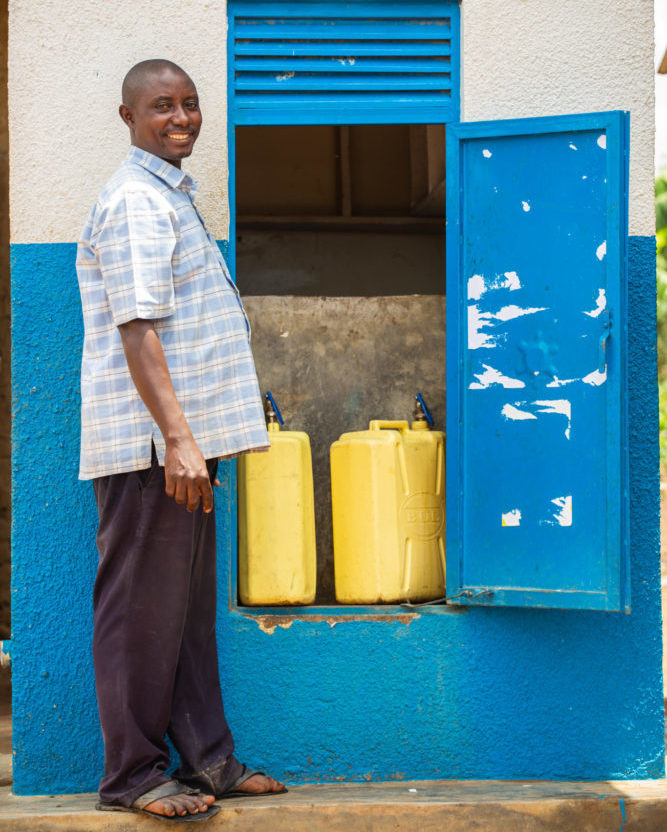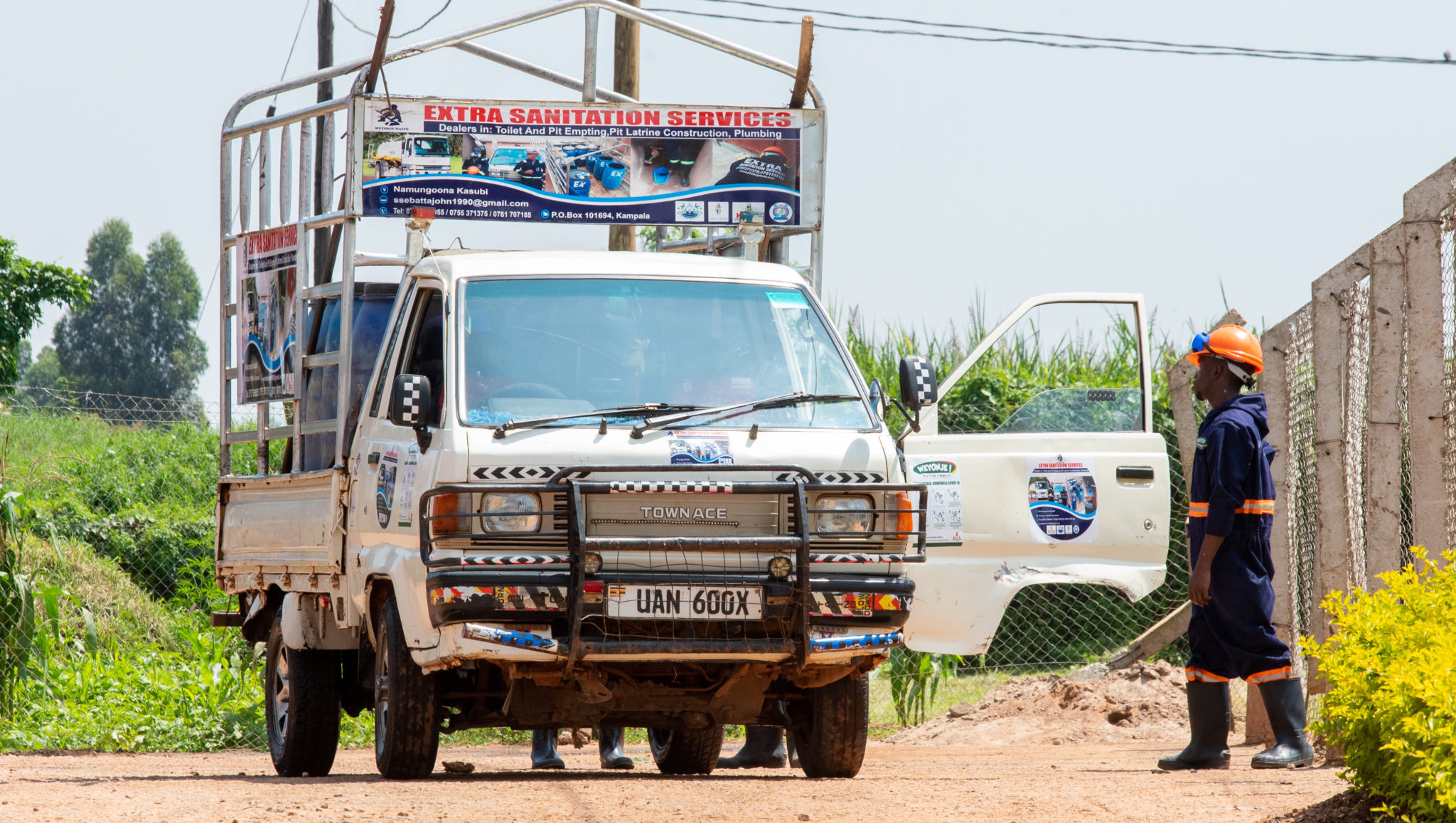Our Approaches

Water As A Business
Water For People Uganda has explored different management models and approaches to supporting sustainable water systems.
In Kamwenge and Luuka, Water For People is using a Water as a Business (WAAB) model, which explores the private sector’s and water entrepreneurs’ potential to manage water systems. The WAAB model also creates jobs for handpump mechanics, private operators, water entrepreneurs, and kiosk and handpump attendants. Water For People trains these entrepreneurs to manage and repair water systems.
To improve water quality in the district, Water For People is promoting the development and implementation of water safety plans, which outline how to protect water sources to decrease water contamination, especially forms of E. coli.
Sanitation As A Business
Water For People promotes a market-based approach to sanitation by working with sanitation businesses and testing different approaches to increase supply and demand of sanitation services.
Sanitation work is researched through the Sanitation Hub (SaniHub), a team of engineers that tests different sanitation technologies to best meet community sanitation needs. The SaniHub has developed technologies like the Rammer, a simple mechanical pit emptying technology; the Decentralized Fecal Sludge Treatment (DEFAST) Plant to treat fecal sludge in areas without sewer systems; and the mobile transfer tank, which allows entrepreneurs to transport waste safely and efficiently.

Additional Approaches
Additional ways Water For People is increasing sustainable water and sanitation coverage throughout Uganda.
School WASH Programs
Training teachers and school health clubs on proper water, sanitation, and hygiene practices, as well as menstrual hygiene management.
WASH in Health Care Facilities
Supporting strong and sustainable WASH in Healthcare Facilities to promote community health
Hygiene Training
While water and sanitation infrastructure are important, people must also understand the importance of using it. That’s why education about safe hygiene practices is included in all interventions.
